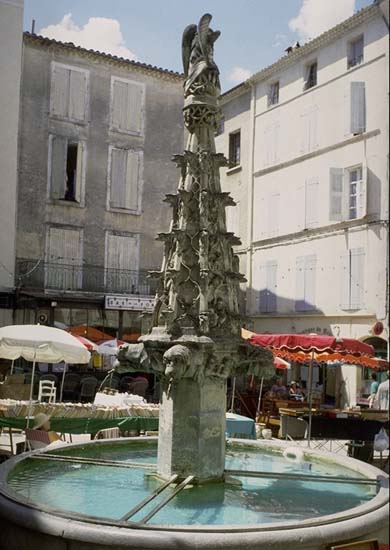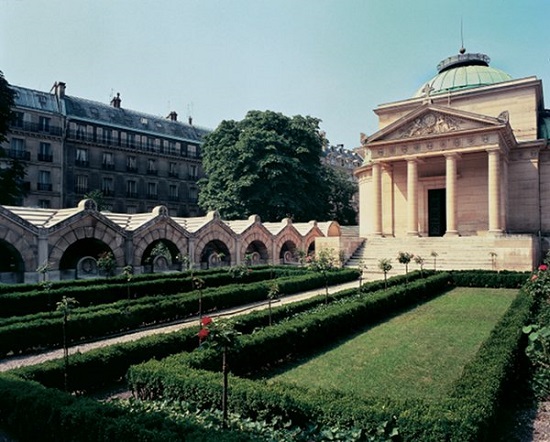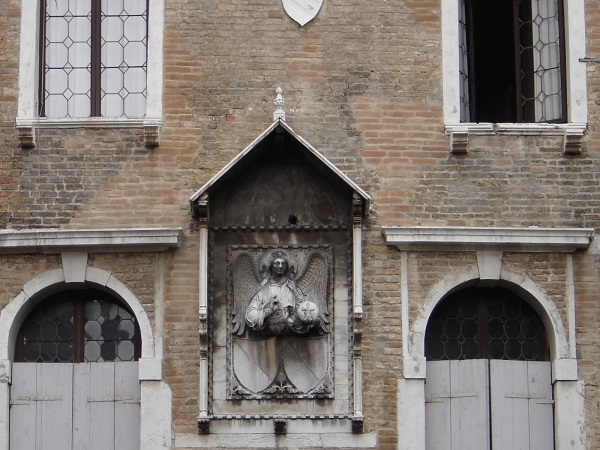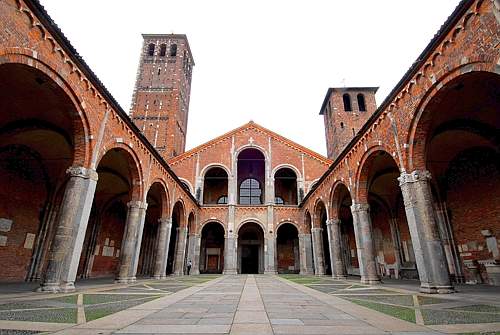
As well as being one of the oldest churches in Milan and a building of fundamental significance to the history of the city, The Basilica of Sant’Ambrogio is also a rich source of legend and arcane fact.
Outside is an immediately noticeable feature that is very unusual in Italy but common to the north of the Alps: two bell towers. The one on the right is the oldest, dating from the eighth century. Known as the “monks’ Tower”, it is built in the style of the defensive towers of the day. The “Canons’ Tower”, on the left dates from 1124. This division between canons and monks reflects the constant rivalry between the two groups over custody of the basilica and responsibility for the various offices associated with worship.
The original plan for the Canons’ Tower – designed by the architect Gaetano Landriani – envisaged that it should be two storeys higher than its neighbour, with the space being used to house the bells. For a long time it was believed that those two additional floors were demolished in 1552 by order of Don Ferante Gonzaga, Governor of Milan, who did not want there to be any towers or bell towers tall enough to overlook the inside of the castle. However, documents later came to light revealing that those two floors had never actually been built – until, that is, 1891, when it was decided to complete the original design.
Enclosed by a portico on all four sides, the medieval-style atrium contains a unique collection of antique remains: plaques, bas-reliefs, sarcophagi and Latin inscriptions. The capitals atop the eighteen columns are particularly worthy of note: each is adorned with both domestic animals and such fantastic creatures as winged horses, chimeras, gryphons, dragons, mermaids and centaurs. Long believed to be merely an expression of the exuberant imagination of the craftsmen who carved them, these capitals actually have a more profound allegorical significance. The entire outside of the church depicts the world and the temptations and dangers of earthly life, hence these are the images of the forces of evil – diabolical monsters and embodiments of vices and sins – that threatened the Church and kept Christians from attaining the Heavenly Jerusalem. However, throughout these images there is the repeated presence of a cross, symbolising the possibility of salvation and protection against evil. The lamb, an animal that is often associated with the cross,also appears as a symbol of good, while the goats and cattle represent the Lord’s flock. In short, the entire iconography is an allegory of the struggle between Good and Evil that comes before entrance into the church, itself a symbol of Paradise and the abode of the Elect.
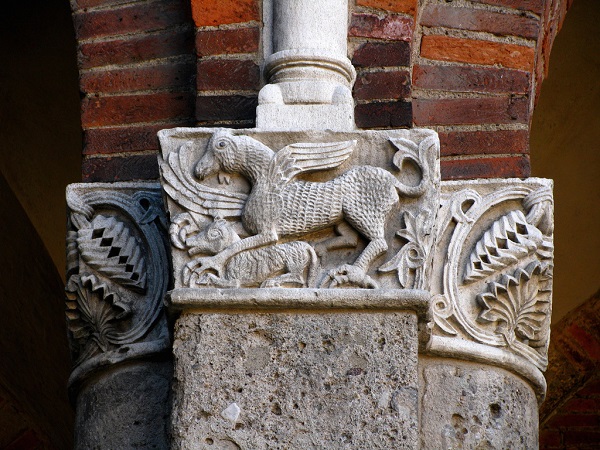
The façade of the Basilica poses an enigma that is yet to be resolved. To the right of the entrance – beneath the Monks’ Tower – is a chessboard pattern motif. Some argue that this is a biblical reference, a magical symbol intended to ward off evil spirits, while others claim that it symbolises Milan itself. However, the most intriguing suggestion is that this records the passage through the city of the Knights Templar. Returning from the Crusades in 1135, the Knights actually lodged in the cloister of Sant’Ambrogio, and given that chess is probably of Indian origin it is often thought that the game may have been introduced into Europe from the Holy Land by the Templars themselves. Indeed, the Knights’ standard – half white and half black – is a sort of simplified chessboard motif. Although the suggestion may seem a little strange, there is other evidence in Milan of the Templars’ passage through the city. Furthermore, the Basilica has two more “chessboards” – inside, just to the left of the entrance.
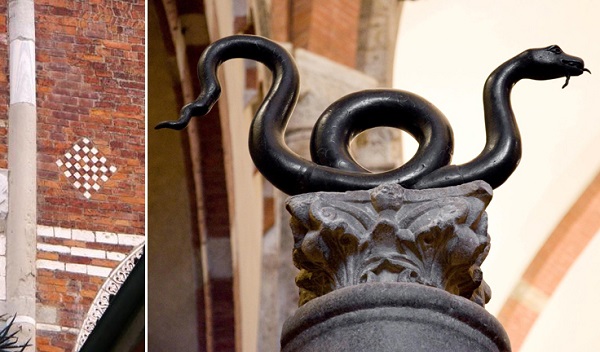
So next time you are in Milan and you pay a visit to the Basilica, take some extra time to contemplate not only the beauty of the building but the wonderful symbolising that it reveals.
(Adapted in part from Secret Milan by Mssimo Polidoro)



